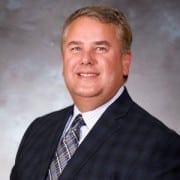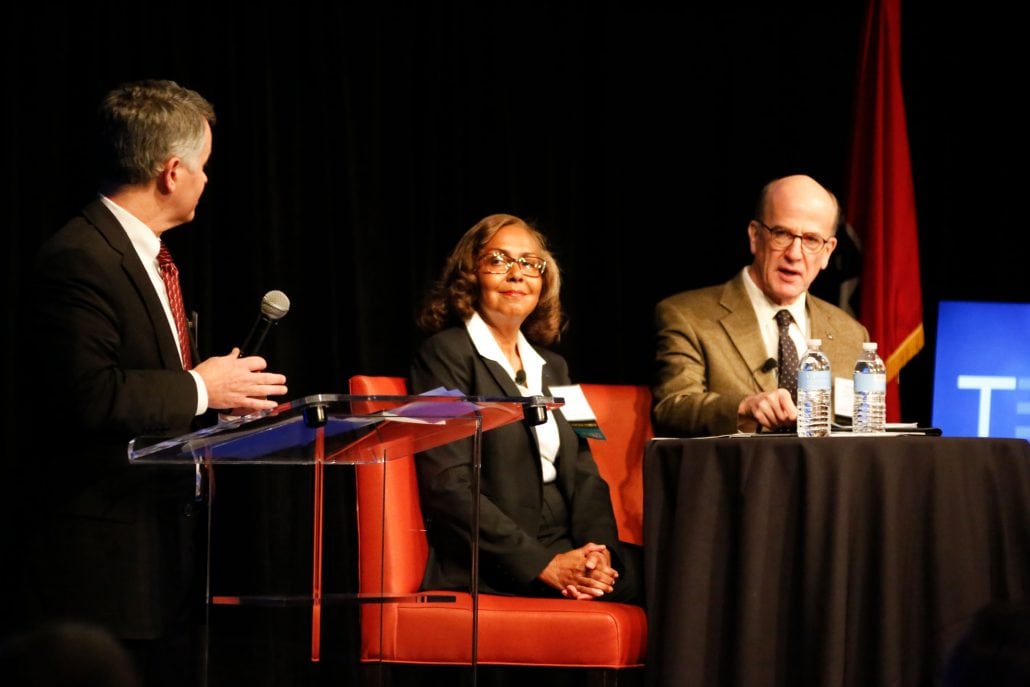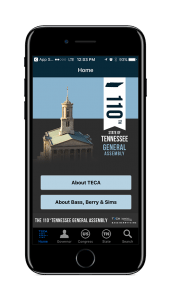More than 45 high school juniors from across the state attended the Tennessee Electric Cooperative Association’s annual Youth Leadership Summit March 13–15 in Nashville.
Sen. Jim Tracy on Tuesday, March 14, greeted delegates attending the three-day leadership and government workshop. Tracy welcomed the young leaders to the Senate Chamber of the Tennessee State Capitol where Alan Whittington, assistant chief clerk of the Senate, explained the process required to pass legislation. Students had the opportunity to debate and vote on a mock bill.
Reps. Mike Bell and John Ray Clemmons joined Sen. Tracy for a town hall meeting with attendees. The three discussed the legislative process and answered questions posed by summit attendees. Delegates then had the opportunity to listen in on debate in House and Senate committee meetings in Legislative Plaza.
In addition to a hands-on look at state government, delegates to the event learned team-building and problem-solving skills and developed a better understanding of their local electric cooperatives.
“I have learned a lot about the Senate and House of Representatives and how laws are passed,” says Sarah Shoate, a junior from Adamsville High School attending the Youth Leadership Summit. “I’m really grateful for the opportunity to come here and improve my leadership skills. I’m grateful for Pickwick Electric Cooperative. My co-op really does a lot to make sure leaders of tomorrow get the opportunities they deserve.”
Delegates to the Youth Leadership Summit are encouraged to be leaders and use their talents to improve rural Tennessee. “Local electric co-ops, school officials and guidance counselors chose these deserving students to attend the summit based on their interests in government and strong leadership abilities,” says Todd Blocker, vice president of member relations for the Tennessee Electric Cooperative Association and director of the Youth Leadership Summit. “They will be the next generation of leaders in rural Tennessee, and we want to prepare them for the challenges and opportunities they will face.”
“We want these students to share our passion for rural Tennessee and help them appreciate the things that make our rural communities special,” says David Callis, CEO of the Tennessee Electric Cooperative Association. “Each year we are encouraged by the caliber of young people who call rural Tennessee ‘home.’”



 “We have produced print directories of the General Assembly for more decades, and this is our fifth year to release an app,” says David Callis, executive vice president and general manager of the Tennessee Electric Cooperative Association. “It is important for Tennesseans to be active and involved with their elected officials, and the app is a tool that makes it easy to speak up on issues that are important.”
“We have produced print directories of the General Assembly for more decades, and this is our fifth year to release an app,” says David Callis, executive vice president and general manager of the Tennessee Electric Cooperative Association. “It is important for Tennesseans to be active and involved with their elected officials, and the app is a tool that makes it easy to speak up on issues that are important.”